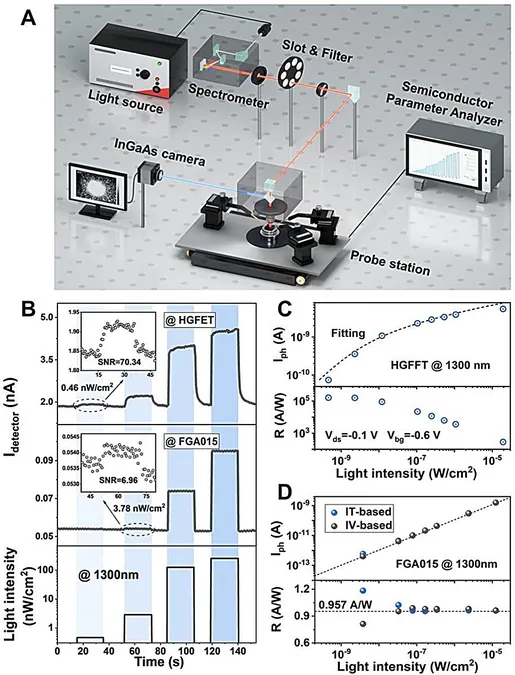
Breakthrough in Starlight Detection: Peking University's Revolutionary Infrared Technology!
2025-01-02
Author: Li
Breakthrough in Starlight Detection: Peking University's Revolutionary Infrared Technology!
In an exciting leap for astronomy and imaging technology, researchers from Peking University, led by Professor Zhang Zhiyong, have unveiled an innovative short-wave infrared (SWIR) detection system capable of identifying starlight! Their cutting-edge work has been documented in a recent publication in the prestigious journal *Advanced Materials*, showcasing a game-changing device— a heterojunction-gated field-effect transistor (HGFET) that boasts an incredible specific detectivity exceeding 10^14 Jones at 1300 nm.
Significance of the Breakthrough
Why is this significant? Current mainstream SWIR detection technologies, relying primarily on epitaxial photodiodes, fall short in capturing ultra-weak infrared radiation crucial for high-end passive imaging sensors. The newly developed HGFET fills a critical gap by achieving ultra-high photogain alongside exceptionally low noise levels, making it perfect for discerning faint cosmic signals.
Technical Innovations
The HGFET integrates a colloidal quantum dot (CQD)-based p-i-n heterojunction with a carbon nanotube (CNT) field-effect transistor, enabling it to effectively detect and amplify SWIR signals. The unique design features an opto-electric decoupling mechanism that enhances performance, allowing for significant signal amplification while keeping noise levels minimal.
Wide-ranging Applications
This advancement not only enhances the sensitivity of starlight detection but paves the way for a multitude of applications, including night vision technologies, environmental monitoring, and advanced space exploration tools.
Future Implications
As astronomy continues to evolve, the implications of this technology are vast. From searching for extraterrestrial life to understanding cosmic events, the HGFET may become an indispensable instrument for astronomers and researchers alike. Could this technology redefine our understanding of the universe and our place in it? Only time will tell—the stars may be closer than we think! Stay tuned for future updates as this groundbreaking research unfolds.



 Brasil (PT)
Brasil (PT)
 Canada (EN)
Canada (EN)
 Chile (ES)
Chile (ES)
 Česko (CS)
Česko (CS)
 대한민국 (KO)
대한민국 (KO)
 España (ES)
España (ES)
 France (FR)
France (FR)
 Hong Kong (EN)
Hong Kong (EN)
 Italia (IT)
Italia (IT)
 日本 (JA)
日本 (JA)
 Magyarország (HU)
Magyarország (HU)
 Norge (NO)
Norge (NO)
 Polska (PL)
Polska (PL)
 Schweiz (DE)
Schweiz (DE)
 Singapore (EN)
Singapore (EN)
 Sverige (SV)
Sverige (SV)
 Suomi (FI)
Suomi (FI)
 Türkiye (TR)
Türkiye (TR)
 الإمارات العربية المتحدة (AR)
الإمارات العربية المتحدة (AR)